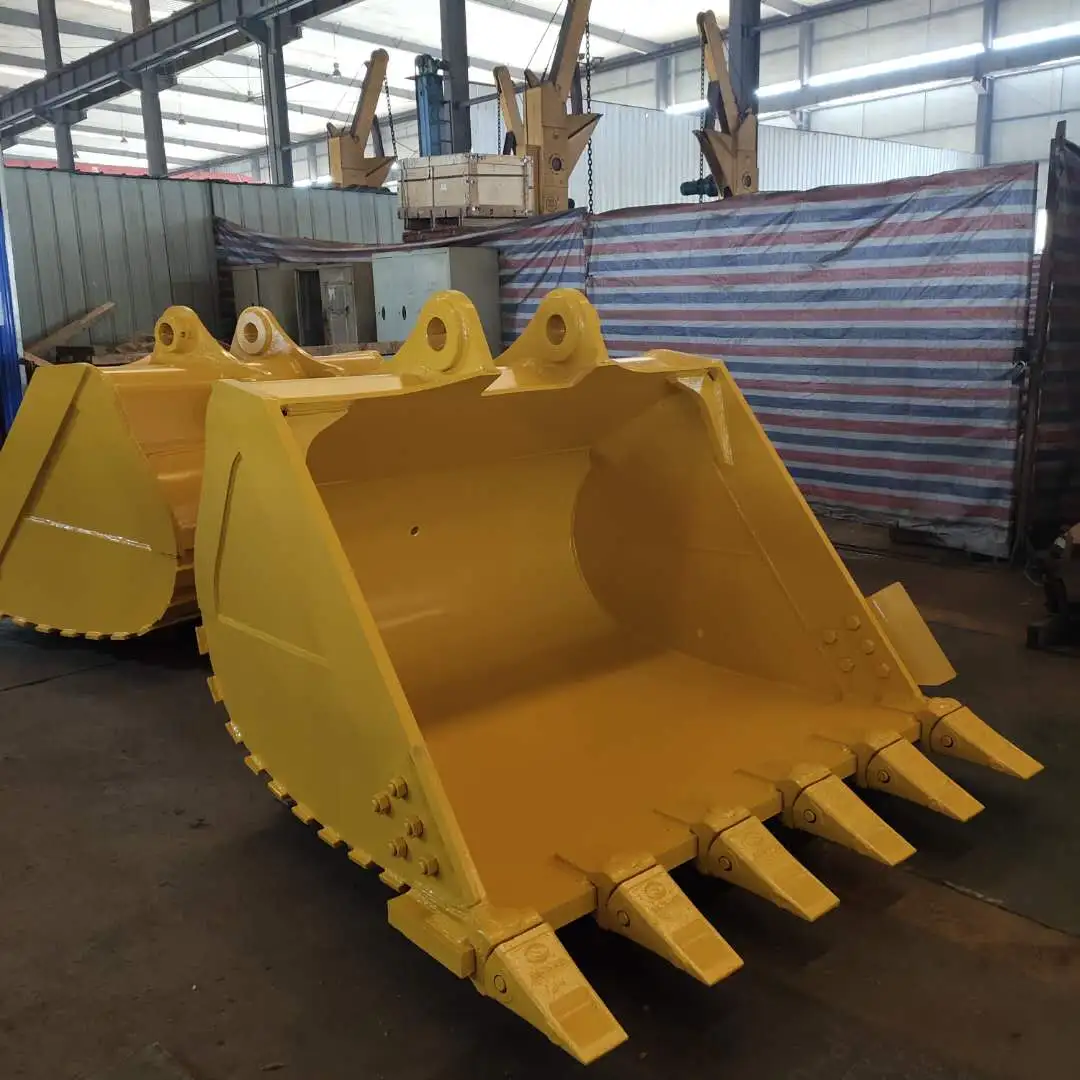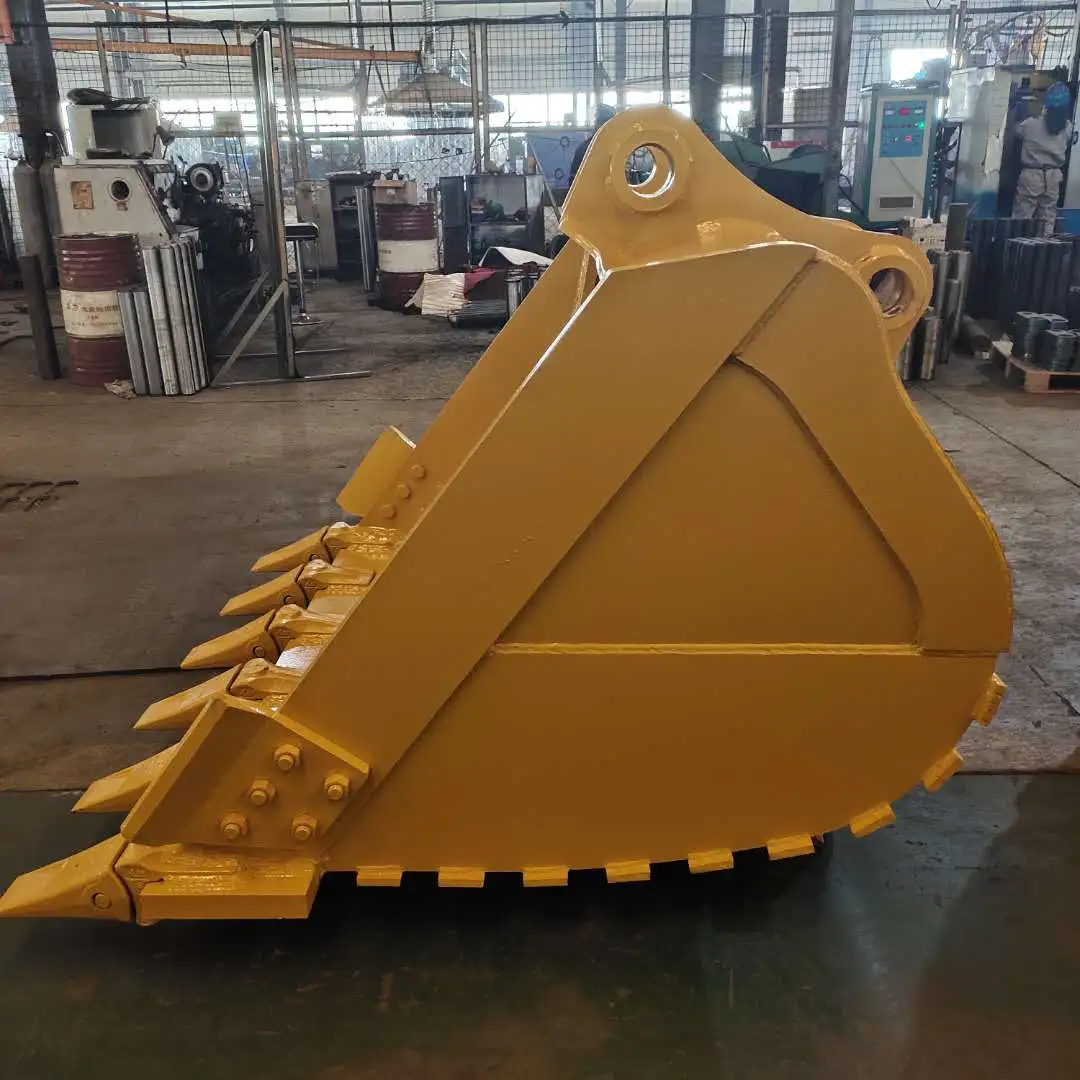What type of steel are excavator buckets made of?
Excavator buckets are primarily made of high-strength wear-resistant steel alloys designed to withstand extreme working conditions. These specialized buckets are engineered using materials like Hardox steel, high-strength low-alloy steel (HSLA), and occasionally ASTM A572 Grade 50 steel. The choice of material depends on the application, with heavy-duty excavation requiring more robust materials that offer superior resistance to abrasion, impact, and fatigue. A bucket must maintain its structural integrity during continuous contact with abrasive materials like rocks, gravel, and compacted soil. Manufacturers like Tiannuo Machinery carefully select premium steel grades that deliver the optimal balance of hardness, toughness, and wear resistance to ensure long-term performance under demanding conditions. The material selection directly impacts the bucket's longevity, performance efficiency, and overall operational costs, making steel quality a critical factor in construction equipment reliability.
High-Strength Steel

High-strength steel represents the foundation of modern excavator bucket manufacturing, offering remarkable performance characteristics that standard carbon steel simply cannot match. This specialized material category encompasses several important steel grades that deliver exceptional strength-to-weight ratios critical for heavy equipment applications.
Fundamental Properties of High-Strength Steel
High-strength steel used in excavation equipment typically features yield strengths ranging from 500-1000 MPa, significantly outperforming mild steel's 250 MPa average. This remarkable tensile capability allows manufacturers to create excavator components that withstand tremendous stresses without permanent deformation. Furthermore, this steel category exhibits superior impact resistance, crucial when the bucket encounters unexpected obstacles like rocks or concrete fragments during operation.
The molecular structure of high-strength steel contains carefully controlled amounts of carbon (0.15-0.30%) alongside alloying elements including manganese, chromium, and molybdenum. These elements work synergistically to create a microstructure that simultaneously provides hardness and toughness, two properties that traditionally oppose each other in metallurgy. The result is an excavator bucket that can absorb significant impact energy while maintaining structural integrity throughout its service life.
Benefits of Excavator Bucket Applications
When incorporated into buckets, high-strength steel delivers multiple operational advantages. First, it allows for strategic weight reduction without compromising bucket durability. Lighter buckets translate directly to improved fuel efficiency and reduced stress on the excavator's hydraulic systems. Furthermore, the material's resistance to permanent deformation means that buckets maintain their original dimensions and operational efficiencies even after prolonged use in demanding conditions.
The wear resistance properties of high-strength steel substantially extend the excavator bucket's service life, particularly when operating in highly abrasive environments like quarries or demolition sites. This longevity translates directly to lower ownership costs and reduced maintenance requirements, making it an economically sound choice for heavy equipment fleets.
Manufacturing Considerations
Producing excavator buckets from high-strength steel requires specialized fabrication techniques. The material's increased hardness necessitates precisely controlled welding processes to prevent heat-affected zone weakening. Manufacturers typically employ pre-heating procedures and specialized welding consumables to maintain the steel's mechanical properties throughout the fabrication process.
Advanced computer-aided design optimizes the bucket's geometry to distribute stress evenly throughout the structure, preventing premature failure points. This engineering approach maximizes the material's inherent strength characteristics while accommodating the steel's reduced ductility compared to standard carbon steel varieties.
Hardox

Hardox represents the gold standard in wear-resistant steel technology, dominating the premium segment of excavator bucket manufacturing. This proprietary steel grade has revolutionized heavy equipment performance capabilities through its exceptional material properties.
Advanced Composition and Properties
Hardox steel features a carefully engineered chemical composition that balances hardness with workability. The material achieves Brinell hardness ratings between 400-600 HBW, significantly outperforming conventional steel grades. This exceptional hardness stems from precise metallurgical control during production, including carefully managed cooling rates that create an optimal microstructure.
The impressive wear resistance of Hardox stems from its martensitic microstructure, achieved through sophisticated quenching and tempering processes. This metallurgical structure provides up to five times the wear resistance of conventional steel while maintaining sufficient toughness for impact resistance. For excavator buckets operating in extreme conditions, this translates to substantially extended service intervals between repairs or replacements.
Remarkably, despite its exceptional hardness, Hardox maintains adequate formability for excavator bucket attachments manufacturing processes. This unique combination of seemingly contradictory properties allows fabricators to create complex bucket geometries without compromising material performance.
Performance in Extreme Operating Conditions
Hardox demonstrates remarkable performance consistency across diverse operating environments. In arctic conditions, the material maintains its toughness where standard steels would become brittle. Conversely, in high-temperature applications, it resists softening that would accelerate wear rates. This consistent performance envelope makes Hardox-constructed excavator buckets particularly valuable for contractors operating across multiple geographic regions or climatic conditions.
The material's exceptional abrasion resistance becomes particularly evident in applications involving highly abrasive materials like granite, basalt, or recycled concrete. Under these conditions, standard steel buckets might require replacement after just hundreds of operating hours, while Hardox buckets often extend to thousands of operating hours before requiring significant maintenance.
ASTM A572 Grade 50

ASTM A572 Grade 50 represents a significant engineering advancement in the high-strength low-alloy (HSLA) steel category that has found valuable application in excavator bucket manufacturing. This material classification offers distinct advantages in specific excavation scenarios.
Material Specifications and Characteristics
ASTM A572 Grade 50 steel features a minimum yield strength of 50,000 psi (345 MPa), substantially exceeding standard carbon steel performance. This enhanced strength results from careful alloy additions—primarily vanadium, niobium, and nitrogen—that create grain refinement during the steel's production. These microstructural improvements deliver strength increases without requiring excessive carbon content that would compromise weldability.
The material exhibits excellent toughness at low temperatures, maintaining ductility in cold operating conditions where standard steels become brittle. This characteristic proves particularly valuable for excavation operations in northern climates or during winter construction seasons. Additionally, ASTM A572 Grade 50 offers superior atmospheric corrosion resistance compared to conventional carbon steel, providing approximately double the corrosion protection in unpainted applications.
Application Suitability
ASTM A572 Grade 50 demonstrates optimal performance in several specific excavation scenarios. General earthmoving operations involving moderate abrasion present ideal conditions for this material grade. Similarly, excavation in clay or silty soils, where extreme wear resistance is less critical than overall structural integrity, represents a perfect application match.
The material's excellent strength-to-weight ratio proves particularly valuable for larger excavator buckets, where weight reduction delivers meaningful operational benefits without compromising durability. Reduced bucket weight directly translates to increased fuel efficiency and potential payload capacity improvements.
Some manufacturers, including Tiannuo Machinery, strategically incorporate ASTM A572 Grade 50 into composite bucket designs, utilizing this material for structural components while reserving premium wear-resistant grades for high-wear areas. This engineering approach optimizes both performance and cost-efficiency.
FAQ
①What makes wear-resistant steel different from regular steel?
Wear-resistant steel contains carefully controlled alloy elements and undergoes specialized heat treatment processes that create a material significantly harder than regular steel. These steels typically achieve Brinell hardness values between 400-600 HBW compared to 120-180 HBW for standard steel. The microstructure features a martensitic matrix that provides exceptional resistance to abrasion, gouging, and impact damage. Unlike regular steel, wear-resistant variants maintain their mechanical properties under extreme conditions while offering 3-5 times longer service life in abrasive applications.
②How long should a quality excavator bucket last?
A quality excavator bucket made from premium materials like Hardox steel should last between 5,000-10,000 operating hours when used in appropriate applications. However, this lifespan varies significantly based on operating conditions, maintenance practices, and the material being excavated. Buckets used predominantly in highly abrasive materials like granite or recycled concrete might require replacement or significant refurbishment after 2,000-3,000 hours, while those used in less demanding applications like topsoil or clay can exceed 15,000 hours of operation.
③What are the signs that an excavator bucket needs replacement?
Key indicators that an excavator bucket requires replacement include visible cracks in structural welds or parent material, significant wear exceeding 20% of original thickness in high-wear areas, permanent deformation affecting operational efficiency, excessive clearance between pins and bushings causing imprecise movement, and visibly worn teeth mounting points that cannot securely hold replacement teeth. Early intervention when these signs appear prevents catastrophic failures and potential safety hazards during operation.
About Tiannuo

The choice of steel in bucket manufacturing represents a critical factor determining equipment performance, durability, and operational economics. As we've explored, modern buckets utilize sophisticated materials, predominantly high-strength wear-resistant steel, premium options like Hardox, and cost-efficient alternatives like ASTM A572 Grade 50, each offering specific performance advantages in different applications.
Tiannuo Machinery leverages over a decade of manufacturing expertise to select optimal materials for each application, ensuring customers receive excavator buckets that deliver maximum durability and performance. Their comprehensive product range offers bucket capacities from 0.1 to 5.0 cubic meters, with weights ranging from 100 to 2000 kg and widths from 500 to 2000 mm. Each bucket is engineered to meet specific operational requirements, whether attached via traditional pins or quick couplers.
For construction companies, mining operations, railway maintenance contractors, and other heavy equipment operators seeking durable, high-performance excavator attachments, material selection represents a crucial consideration impacting long-term value. By understanding the characteristics of different steel types, equipment managers can make informed procurement decisions that optimize operational efficiency and minimize lifecycle costs.
To learn more about Tiannuo's premium bucket options and receive expert guidance on selecting the optimal configuration for your specific application, please contact our technical specialists at tn@stnd-machinery.com.
References
Handbook of Mechanical Engineering: Steel Selection for Earth-Moving Equipment. Peterson, M.J. & Thompson, L.K. (2023). American Society of Mechanical Engineers.
Wear-Resistant Materials for Construction Equipment: A Comprehensive Guide. Williams, J.R. (2022). Construction Materials Journal, 45(3), 112-128.
Comparative Analysis of Steel Grades in Heavy Equipment Applications. Chen, H. & Nakamura, T. (2023). Journal of Materials Engineering and Performance, 32(4), 2189-2201.
Excavator Attachment Design: Materials and Manufacturing Processes. Ramirez, S.C. & Okonkwo, E.A. (2022). Industrial Equipment Engineering, 18(2), 75-91.
Metallurgical Considerations for Earth-Moving Equipment Components. Johannsen, K.L. & Patel, R.V. (2023). International Journal of Mining and Excavation Engineering, 29(1), 45-62.
About Author: Arm
Arm is a leading expert in the field of specialized construction and railway maintenance equipment, working at Tiannuo Company.

